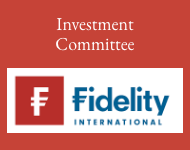In his regular sector report analysis, Darius McDermott, managing director, FundCalibre, looks at the prospects for the sector given current geopolitical and economic pressures.
A global pandemic, inflation, war, trade tensions, continuous geopolitical concerns, and a strong US dollar – it’s fair to say anyone who has been invested in emerging markets in the past decade has been disappointed by their returns.
In that time, the MSCI Emerging Markets Index has returned a quarter of what global equities have produced (56 vs 226 per cent)* – not exactly a glowing endorsement for a region where you are deemed to take extra risk for greater returns. The short-term has also been challenging – the past year has seen Covid-19 hit the region particularly hard due to its heavy manufacturing output (working from home is not really an option for this sector, bringing production to a halt).
But there is an argument the region is now one of the more attractive from a valuation perspective – particularly when you consider the tailwinds provided by demographic and urbanisation trends. Add in the fact that many emerging markets have de-rated over the last 15 years, and there is significant potential for outperformance over developed markets from here.
Challenges: wide and varied
Having scaled back fiscal policy after the pandemic, many emerging markets are now being stretched to their limits as governments seek to reduce the impact of higher energy and food prices, due to war in Ukraine. Fiscal spending had to be increased further to meet those challenges, while other countries have adopted measures to compensate for high inflation, including the reduction of consumption taxes and introducing caps on fuel prices
Inflation on the whole reflects the growing divergence in emerging markets, with exporters like Indonesia and Malaysia faring better than smaller commodity importers like Myanmar, Sri Lanka, and Pakistan. China also stands out as almost being in a completely different cycle – it has been cutting rates and has far more room to manoeuvre.
This dispersion in fortunes is reflected yet again by the unfortunate events in Ukraine. On one side, many emerging European nations have struggled due to their dependence on Russian energy, grain, and tourism. By contrast, many Latin American countries benefitted from increasing commodity prices.
China’s challenges are well-documented with its zero-Covid policy and the overhanging threat of government intervention – as well as ongoing geopolitical wrangling with the US. The market has fallen sharply in the past 20 months as a result. But things can change quickly and there is hope that the 20th Party Congress Report in October has certain long-term goals. These include achieving the per capita GDP level of a moderately developed country and the underscoring of plans to further open the markets up to foreign investors – which will bode well for future growth.
The other heavyweight in the region is India, a country which has recently overtaken the UK as the world’s fifth largest economy. The tailwinds for India include favourable demographics, growth, few geopolitical concerns, strong corporate governance, and the growing online economy. The only negative is valuations, although they look justified when compared to many of their peers.
More patience needed
Oxford Economics recently downgraded its forecast for emerging markets, warning that many of the headwinds are intensifying. However, lead economist Simon Knapp does believe that while the outlook will be sluggish for the next year or so, pockets of opportunity will appear, for example in Vietnam and Indonesia, where the firm forecasts growth of 6 and 4.7 per cent respectively in 2023**. The group also believes growth in emerging market Asia will be quite robust post 2023, with the likes of Indian GDP forecasted to come in at 7 per cent in 2024**.
Growth is also likely to be aided by the move to net zero. Moving to a world of secure energy puts significant pressure on production of certain commodities, many of which are concentrated in a handful of countries in emerging markets.
It’s going to be far from smooth sailing from here, but many long-term trends – coupled with historically low valuations offer hope for major returns in the region for proven active managers.
Funds to consider
JPMorgan Emerging Markets Investment Trust. Managed by Austin Forey since 1994, this trust is all about looking at the growth of companies, rather than specific countries. It targets high quality businesses that can outperform over a prolonged period and has an excellent track record.
GQG Partners Emerging Markets Equity. This fund targets 200-300 basis points annualised outperformance over a full market cycle with less volatility. The manager’s philosophy is to build a concentrated high-quality portfolio with durable earnings.
Federated Hermes Global Emerging Markets SMID Equity. This fund targets a high single-digit return per annum over the longer-term of 5-10 years. Manager Kunjal Gala looks for quality companies that are exhibiting compound growth and that earn more than their cost of capital over the long-term.
*Source: FE fundinfo, total returns in sterling, 2 November 2012 to 3 November 2022
**Source: ICAEW
Past performance is not a reliable guide to future returns. You may not get back the amount originally invested, and tax rules can change over time. Darius’s views are his own and do not constitute financial advice.
Investing in Emerging markets – Pros and Cons
Positives
- Valuations now look attractive
- Emerging markets continue to trade with an economic growth premium over developed markets
- Strong demographic and urbanisation tailwinds
- Growing dispersion in returns across countries creates active opportunities
Negatives
- Political and economic volatility is greater
- Slowdown in China still weighs over the wider economy
- The threat of inflation
- A strong US dollar places significant pressure on the region
This article was first published in the December 2022 issue of Professional Paraplanner.
































